Prince Alfred and the train to nowhere
By Simon Miller, Library Technician, State Library of Queensland | 26 February 2018
150 years ago the Australian colonies were buzzing with excitement as they were visited for the first time by a member of the Royal Family. Prince Alfred, or His Royal Highness The Duke of Edinburgh, as he was officially titled at the time, was engaged in a voyage around the world as Captain of H.M.S. Galatea. Alfred, the second son of Queen Victoria, had begun his naval career as a midshipman at the age of 14 in 1858. He was promoted to Captain in 1866 and took command of the Galatea in 1867. He would continue in his navy career, ultimately being appointed Admiral of the Fleet in 1893.
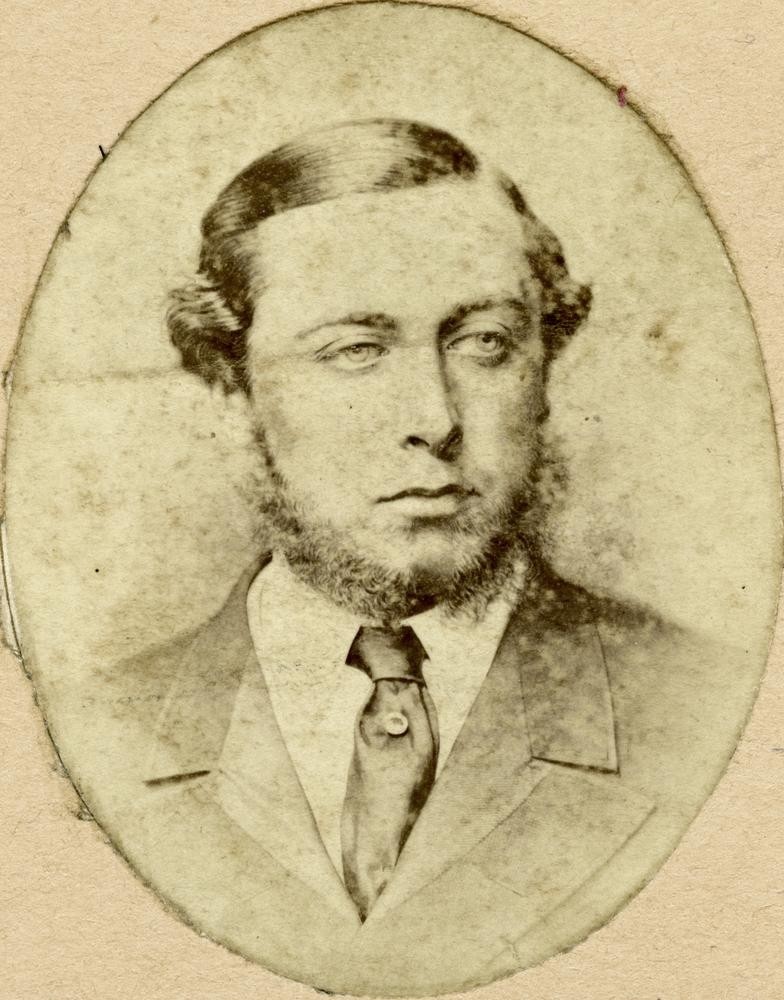
Portrait of H.R.H. Prince Alfred, Duke of Edinburgh, John Oxley Library, State Library of Queensland Neg: 204563
The Galatea, a frigate of 3000 tons, powered by both sail and 800 horse-power of steam engines, arrived in Adelaide on 31st October 1867. After visits to Melbourne and Hobart, the Galatea arrived in Sydney on 21st January 1868. During his visit to Sydney the Duke witnessed a cricket match between a team of aboriginal cricketers and a team of officers of the Army and Navy. This aboriginal cricket team became the first Australian cricket team to tour England later in 1868. While in Sydney the Galatea was put into dry-dock at Cockatoo Island for repairs to worn parts on the screw shaft.
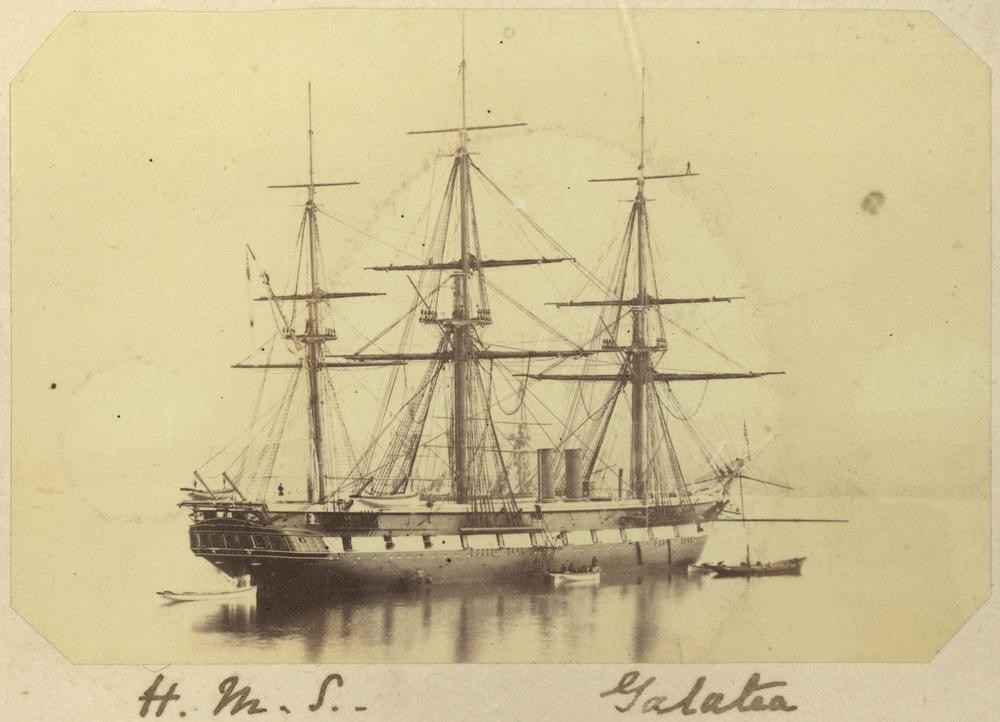
Three masted sailing ship H.M.S. Galatea, ca. 1868, John Oxley Library, State Library of Queensland Image number: API-001-0001-0021
A visit to Queensland had not been on the Duke's original itinerary but a deputation from the Queensland Parliament combined with a concerted campaign by the Queensland press prevailed on His Royal Highness to make a brief visit to Brisbane and southern areas of Queensland. His own ship being out of action, the Duke sailed for Brisbane on H.M.S. Challenger under the command of Commodore Rowley Lambert.
The Challenger arrived in Moreton Bay late on 24th February 1868 but due to a storm the ship anchored in the Bay and the Duke's arrival in Brisbane was postponed until the next morning. The last minute decision to include Queensland in the royal tour meant that the arrangements for the visit were somewhat hastily arranged. In addition, the Premier of Queensland, Robert Mackenzie, was beset with political difficulties that he hoped the visit of the Duke would help to alleviate. Premier Mackenzie was particularly at odds with the Member for Western Downs, James Taylor, the 'King of Toowoomba' and while he found it necessary to include Toowoomba on the Duke's schedule Mackenzie would yet find a way to short change the citizens of that town.
The Duke's arrival in Brisbane on the morning of 25th February was greeted with all the expected pomp and ceremony that he was no doubt, by now, thoroughly fed up with, although accepting all with as much good grace as he could muster. The ceremonies were reported somewhat tongue-in-cheek by the Queensland Times, Ipswich Herald and General Advertiser.
We shall not stop to detail all the demonstrations of loyalty with which the visitor was received. Suffice it to say that no great person was absent from the scene, and hardly even a little one--that the Volunteer Rifles of Brisbane and Ipswich, and a detachment of the Queen's 50th, and a company of gorgeously decked aboriginals did their best possible in honour of the guest - that fair ladies cheered, bands played, and people shouted-that green leaves, bright flowers, gay bunting, and graceful toilettes charmed the eye - that bishops, judges, senators, consuls, elbowed each other at the landing--and that, to crown all, his Worship the Mayor presented a rather ungrammatical address. There was a grand procession also through the principal streets of the town, from the landing place to Government House-the Masons, Foresters, Oddfellows, and other societies making a very effective display--all the route lined with enthusiastic spectators. The procession halted in one place to allow the school children to sing "God Save the Queen" to gratify (?) the Prince. At Government House the Volunteers again acted as a guard of honour, and so ended scene the first.
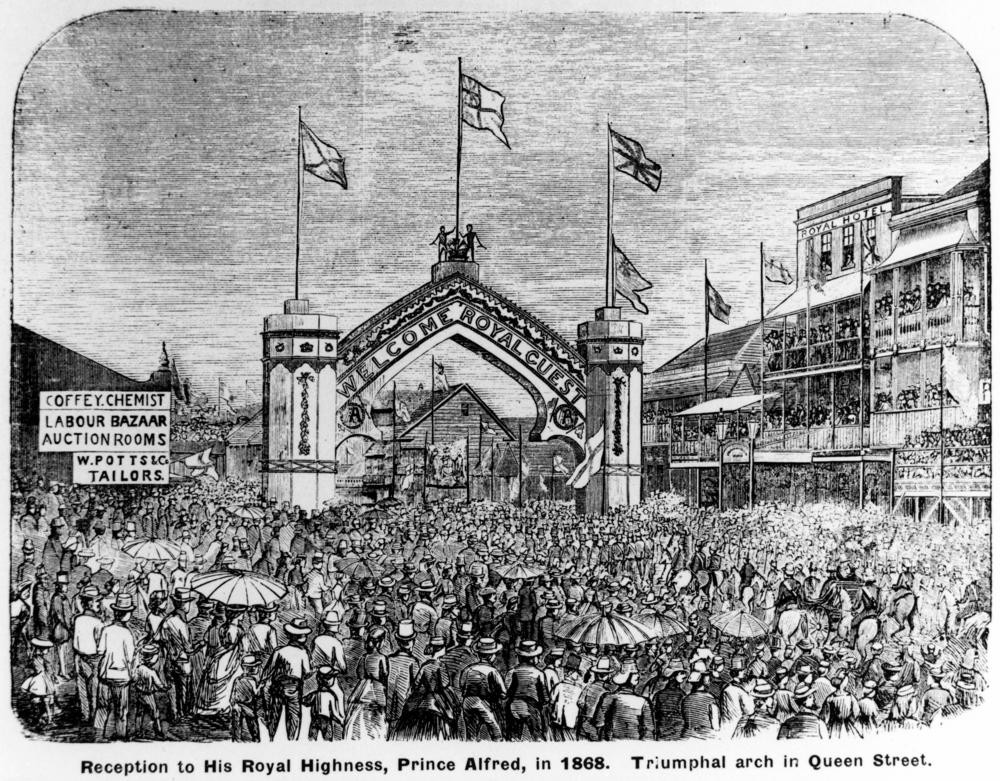
Triumphal arch in Queen Street, Brisbane, for the visit of His Royal Highness, Prince Alfred, in 1868, John Oxley Library, State Library of Queensland Neg: 88356
In the afternoon the Duke held a levée so the great and good of the colony, could have an opportunity to greet the royal visitor. This was followed by an number of entertainments which, owing to the haste of the arrangements and an over full schedule were not perhaps all they could have been. The Brisbane Courier was less than glowing in its reports of several of the events. Here they talk about the Highland games held in Queen's Park, and the display of fireworks in the evening, which are described tactfully in The Cruise of H.M.S. Galatea (the official version of the tour written by two members of the royal entourage), as "a very effective display".
A tolerably long programme had been prepared by the committee, and a good portion of it consisted of pipe music and dancing. Unfortunately, however, the games were commenced so late that nothing like the whole of the sports arranged to have come off could be got over in time. Under these circumstances, several of the most interesting exhibitions of strength and skill were taken indiscriminately, without attempting to adhere strictly to the printed programme. ...
The display of fireworks at the Queen's Park commenced about 8 o'clock in the evening, and lasted over an hour. A large number of persons gathered to witness it. The bunya bunya and other trees were all decorated with Chinese lanterns, and the effect was very agreeable. The fireworks were for the most part of a very ordinary character. Not being skilled in the technical terms of the pyrotechnic art we can only say that there were plenty of rockets, and what boys call fiery snakes, which to the infinite delight of the crowd, young and old, darted hither and thither, and shot out showers of golden drops or brilliant stars of different hues. Some set representations, the Prince of Wales' plume, Prince Alfred's monograms, the Galatea in an engagement with some unseen foe, and some others were good in their way, but not as successful as could be wished. Most persons seemed rather glad when the display was over, and the assembled crowds joined those traversing the streets.
In the evening the Duke attended an amateur concert which, although due to start at 8 p.m., was delayed until the royal party arrived shortly after 10 p.m., the audience being required to wait on the arrival of the royal guest. The next morning the Duke and his party left for a quick tour of the Darling Downs, the Duke driving his own carriage, which surprised everyone at Ipswich. The report from the Queensland Times, Ipswich Herald and General Advertiser gives an idea of the preparations for the visit.
A monster reception arch - monstrous in a double sense, for it was horribly ugly - was erected on the top of Limestone Hill, on the Brisbane road, just outside the town, from which spot there is a fine view of Ipswich, and here the inhabitants congregated in thousands to welcome the expected guest. Here also as a platform for the Mayor and Aldermen, and a grand stand for the ladies; and here were assembled also the schools, with nearly two thousand children, all eager to swell their throats loyally. It was expected that the Prince would arrive soon after ten, and by that hour therefore the town was almost emptied-nearly everyone who could do so betaking himself to the top of the hill. It was not expected, however, that the Duke would drive himself, and a procession from the arch to the railway station (more than half a mile) had been arranged. It was generally understood, however, that there would be no long stay here on Wednesday, as it was intended to get as far as possible up the railway line into the interior the same day.
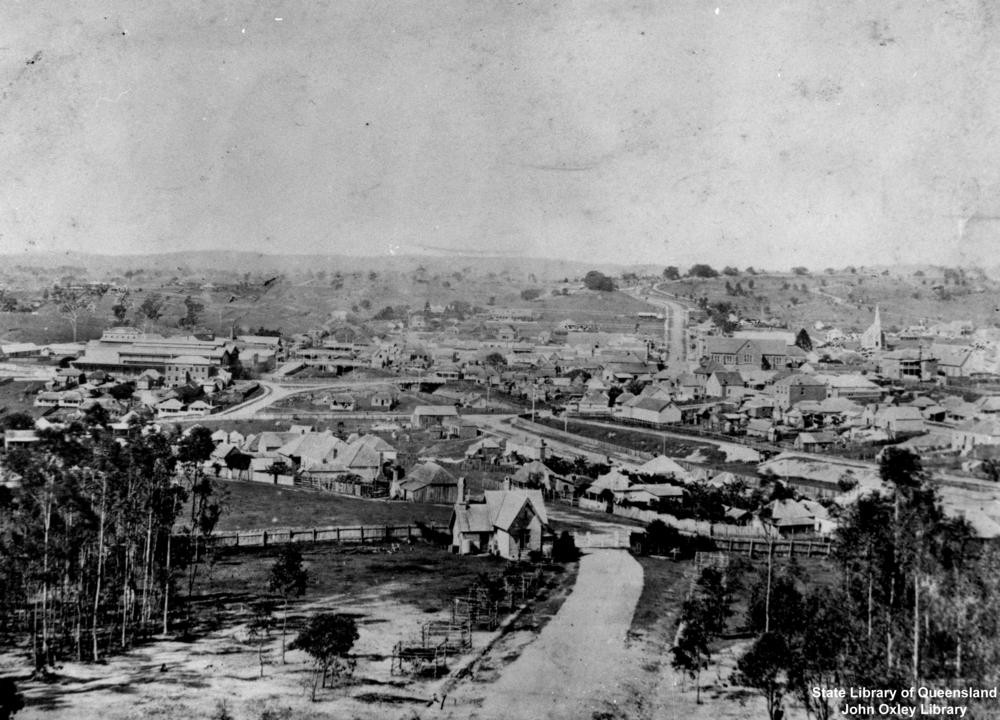
Views of Ipswich, Queensland, ca.1870, John Oxley Library, State Library of Queensland Neg: 999
When the Duke boarded the special train for his visit to the Downs it might have been expected that, given the train had no dining or sleeping cars, the party would stay overnight in Toowoomba or possibly Dalby although the railway line had not yet reached the town. Instead the Premier had arranged for the train, after the briefest possible stop in Toowoomba, to proceed to the end of the line at Jondaryan, where there was no town at all. The official account in The Cruise of H.M.S. Galatea makes no secret of the bemused reaction of the Duke and the royal party.
The station here is very like those at small country places in England. There is no village, but only a few small buildings occupied by the people employed on the line. On our arrival His Royal Highness was shown into a small room, about 10 feet square, constructed of boards, and furnished with a few chairs, a small table and sofa ; from this a door opened into a scantly furnished bedroom. A number of squatters and other gentlemen, who had been assembled on the platform, now took possession of the vacant carriages, and settled down to pipes and conversation. It did not seem to be very clear what was to be the next part of the performance ; and the Duke, highly amused at the oddness of the whole affair, remarked, "What came we out for to see?"
A supper was provided in a rough marquee at which - A very amusing speech was made by one of the gentlemen present, in the course of which he produced a large 'damper' as big as a small flitch of bacon, stating that it had been specially made at his own station for His Royal Highness, and ended by walking up to the Duke and asking His Royal Highness to accept it. The Duke thanked him, but begged that he would not expect him to eat it all, but would consider it to be 'received as eaten.'
The next morning the Duke rose early in expectation of a promised emu hunt but the required horses never arrived and he had to content himself with shooting a few crows. There being no reason to stay longer, the party boarded the train and returned to Toowoomba where the Duke foiled, to some extent, the Premier's plans by accepting a ride around the town in a carriage while the train was prepared to continue to Ipswich. The people of Toowoomba, being disgusted with Premier Mackenzie's machinations, burned the Premier in effigy that night. The train arrived back at Ipswich at half past three and the Duke visited the Grammar School and attended a ball before retiring to somewhat better accommodation than that at Jondaryan.
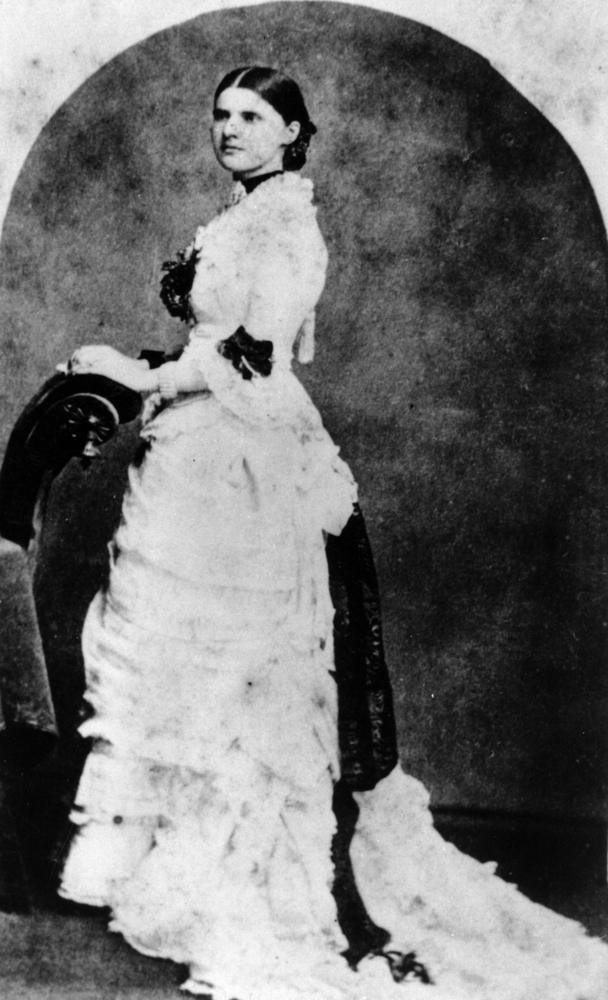
Minnie MacKenzie one of the Premier's daughters in her ball gown at the Citizens' Ball, John Oxley Library, State Library of Queensland Neg: 74685
After driving back to Brisbane the Duke attended the races at Eagle Farm and a Citizens' Ball in the evening. The next morning the Duke laid the foundation stone for the Brisbane Grammar School and planted some trees in front of the Parliament before boarding the government steamer Kate to the cheers of the crowd and the firing of salutes by the Brisbane and Ipswich Volunteer Artillery batteries.
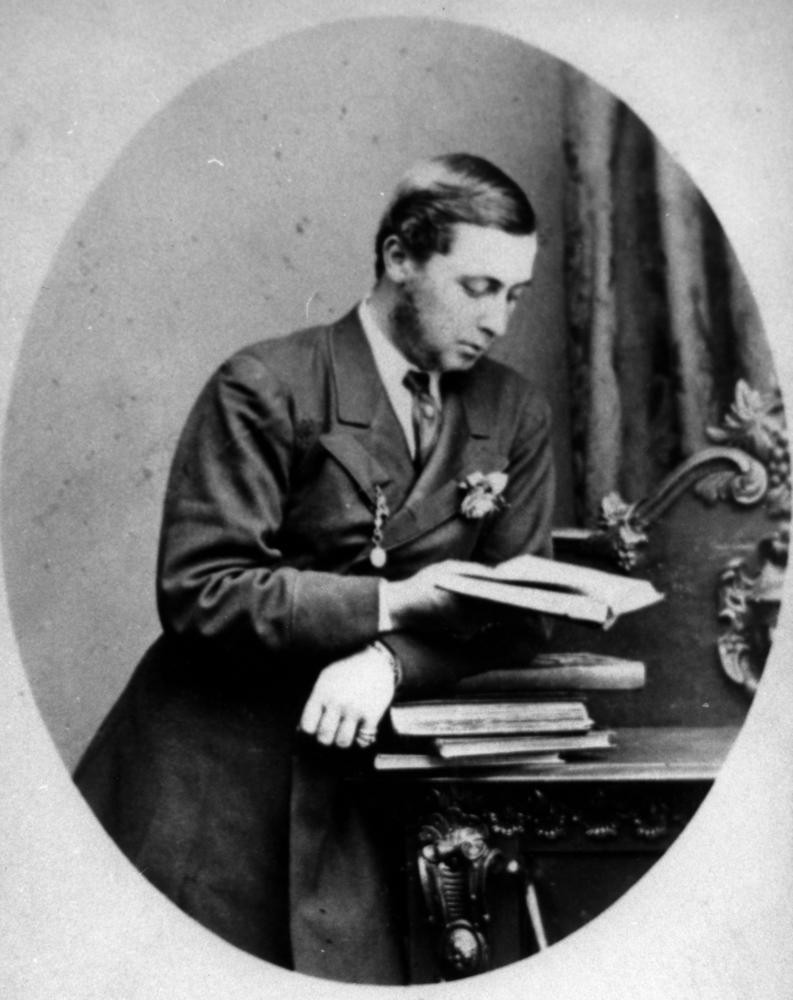
Contemplative study of H.R.H. Prince Alfred, Duke of Edinburgh, ca. 1868, John Oxley Library, State Library of Queensland Neg: 108321
After the Duke returned to Sydney, during a fundraising picnic for the Sailors' Home held in a park at Clontarf, the Duke was shot and seriously wounded by Henry James O'Farrell, an Irishman with a history of mental illness. The Duke was attended in his recovery by a group of nurses trained by Florence Nightingale who had only just arrived in Sydney. Alfred made a complete recovery and was able to resume his voyage although he postponed his visit to New Zealand until a later date and sailed directly back to England. O'Farrell was tried and executed for attempted murder. The attempted assassination outraged the citizens of the Australian colonies and stirred up anti-Irish and anti-Catholic feeling. Despite this unfortunate incident the Duke's tour was considered a great success and Alfred was happy to convey to his mother, Queen Victoria, the loyalty and fondness of the Australian people towards their monarch.
We have a number of blog stories covering later visits by members of the Royal Family to Queensland.
“Welcome, Sweet Prince” – the Shakespearean Ball and Pageant
Queen Elizabeth II's first visit to Queensland
Queen Elizabeth II - History in Pictures
Princess Alexandra : royal visit 1959 : History in pictures
Simon Miller - Library Technician, State Library of Queensland
Comments
Your email address will not be published.
We welcome relevant, respectful comments.